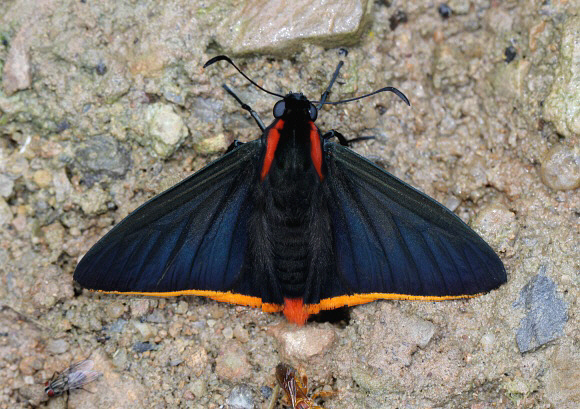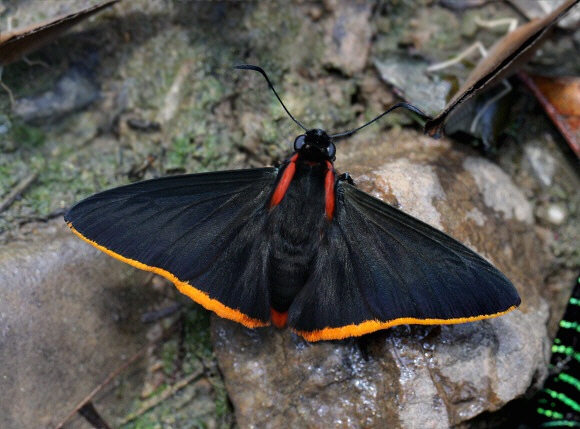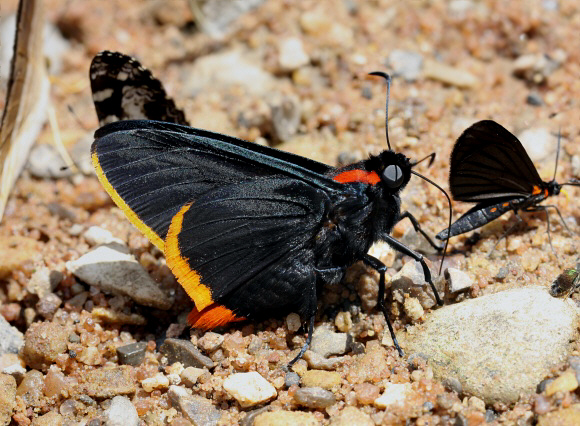
Introduction
The subfamily Pyrrhopyginae comprises 163 known species, most of which are found only in the tropical rainforests and cloudforests of South America, although a few reach as far north as Mexico, and a single species reaches Arizona. They are characterised by having bodies which are very large in proportion to the wings. Other characteristics include a massive muscular thorax, compressed abdominal segments, prominent eyes, and antennae with recurved clubs.
The 38 species in the genus Pyrrhopyge are all similar in appearance, typically having a black or dark brown ground colour, and white or orange fringes. In all species the tip of the abdomen is red, and in many species including sergius and phidias the face is also red. Several of the orange-fringed species such as creona, telassa, telassina and hadassa have bright red shoulder streaks. Identifying each species is a matter of recognising the combination of face colour, shoulder-streak length, and the width and colour of the wing fringes. It is also necessary to examine the underside hindwings – e.g. in telassa these have a pair of red spots at their base, which are absent in hadassa.
Pyrrhopyge hadassa occurs in Peru and Bolivia.

Habitats
This is a mid-elevation species, found at altitudes between about 400-1200m.
Lifecycle
To be completed.
Adult behaviour
To be completed.

